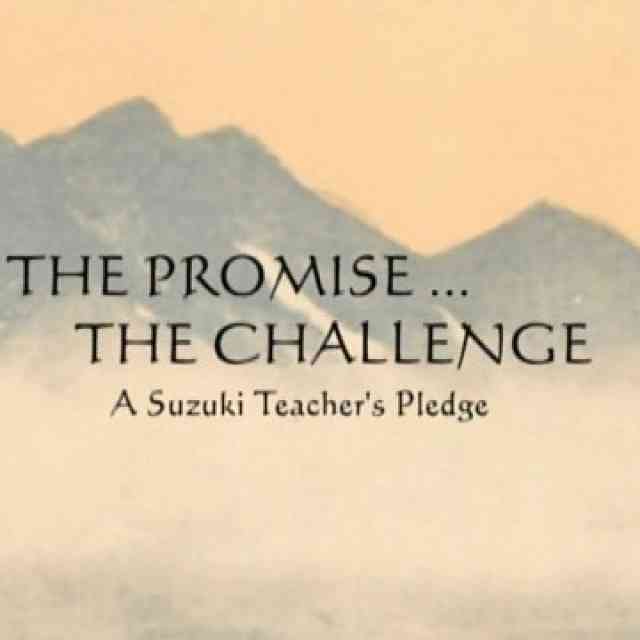“Every note!” Professor Mehta affectionately insisted. My classmates and I felt a sense of duty to deliver each sound. Phiroze Mehta, Professor Emeritus of Piano at Ithaca College, instilled in us a desire to hear every note in all of its complexity. He told us that you could give the most beautiful performance by playing only one note. During repertoire class, he invited my classmates and me to take turns coming to the piano. We were each assigned to play the first note of our pieces. The process of getting ready defined our performances. Professor Mehta provided positive encouragement, urging us to play each starting note with plenty of heart. Today, I continue to reflect upon the importance of one note. With one note, we convey our respect toward music and the audience. We show the character of the music that we are about to share.
One Note as a Guide
Can one note help to guide the course of a piece? If nothing else, playing one note with intention gives us confidence. Small successes build upon each other and foster a positive mindset. I hope for my students and their parents, and all people who make music, to feel proud of each effort. Proceeding from the idea that the quality of one note can inform the quality and character of an entire piece, the following exercise can offer students a way to focus their attention and musical intention. Our central question is: Can focusing on one melodic note help to improve the resonance of a whole piece, in line with the character of the music? In general, how are tone quality and musical character related?
Exercise
Listen to the student play a complete performance of the piece (or the parts they’re ready to perform). Pay attention to any spots that seem to be most enjoyable for the student.
The teacher and/or student choose a short segment or phrase in which they plan to highlight a select note.
The teacher plays the chosen note for the student, focusing on the tone quality and the character of the note. While playing, the teacher thinks about the character of the whole piece and how that note would relate to it. The teacher and student play the selected note back and forth a few times.
The teacher and the student then play back and forth for the phrase that includes the select note. Together, they listen for the quality and character of the original note to “spread” over the phrase. It may be helpful to play the phrase with a couple of different articulations to envision the sound of each note.
The student and the teacher conclude with another complete performance of the piece, envisioning the resonance of the original note traveling throughout the music.
After completing this exercise, consider several questions to further build upon the ideas that arose. First, did the selection of one note help the student envision the tone quality and the character of the phrase? Depending on how the student listens to music, hearing the selected note within its melodic or harmonic context could enrich the connection between the original note and the whole phrase. Then, consider how much verbal discussion there should be of the musical qualities found within a given piece. Listening to how the student experiments with the tone production of the selected note, and letting the student initiate any verbal discussion, will guide the course of exploration while caring for each sound. Finally, ask, “How does one determine the right tempo to practice a spot, when focusing on tone production and resonance?”
The Fun Challenges of Choosing One Note
Seeing students’ reactions to selecting one note is fun and heartwarming. Often, students and their parents grin, ponder, or laugh. Music is complex, but one note seems so simple. Several students will immediately pick the first note of a piece. This offers valuable insight into their thinking, and can be a beautiful teaching point. Starting with the first note of a piece reinforces the act of getting ready for a complete performance. Imagining the sounds of the piece helps us feel prepared to join in with the music. We envision the energy that the first note carries, whether it vivaciously vibrates or smoothly slides into the first phrase. A defined beginning leads to clarity of the piece’s musical character.
Through playing back and forth, we discover other notes on which to focus. Approaching tone production has innate challenges that are not easy to define but depend largely on the student. For some students, a phrase climax may carry more significance than the first note of the piece. Eira, a Book Two student, recently listened for a full sound at the peak of the first phrase in The Happy Farmer. We took turns playing and listening for the highest note to have a lasting sound. We discovered ways that we could let our arms relax while playing with a sideways-moving thumb, to allow the phrase peak to resonate. When Eira played the entire melody a second time, she showed a deeper connection to the trajectory of the phrase—and she had much more fun!
One Note as Part of a Pattern
When I asked another student, Lauren, to think of something with a ringing sound, she mentioned a bell. I said to Lauren that maybe we could find a “bell note” in A Short Story. When she focused on the bell note that she chose (the peak of the phrase), she played with a richer tone quality for the first phrase.
Bell notes can come in different forms, as part of a melody or as part of a flowing accompaniment. With accompaniment patterns, focusing on the tone of one small pattern can complement the shape of the melody. In Ecossaise, a student named Cora and I recently took turns playing the very beginning of the left hand in the B section. We explored the idea of the C Major broken chord feeling fluffy in our left hands, playing on the tip of the thumb. By envisioning the sensation of the chord being light and listening for the thumb notes to be soft, the high C in the right-hand melody shined even brighter.
Specifying the sound of one note as part of a pattern can also enrich pieces that have ongoing motion. Brock, a Suzuki Book Four student, continues to cultivate his staccato touch in Alexander Tcherepnin’s Bagatelle. Often, we begin with the B section playing a little slower than performance tempo. We experiment with the first downbeat, making the staccato touch as crisp as possible. The resulting space between the notes maintains suspense as the dynamic level builds throughout the B section.
Repeated Notes
A distinct approach to one note can propel the rest of the phrase. For example, a secure starting note helps with repeated melodic notes. Harper, a Suzuki Book One student, is working on greater sound contrast between repeated notes in the melody of Little Playmates. After playing through the entire melody once, we took turns selecting a pair of repeated notes to listen to. We then played the selected pair of notes at varying speeds, focusing on getting ready to play the first note of the pair. Harper and I traded ideas with each other by taking turns playing. By exploring louder versus softer sounds, and slower versus faster lifts, Harper connected with a feeling of playfulness that reflects the character of the piece.
Repeated notes also instill calmness. They bring ease by giving us more time to connect with phrase shapes as they unfold. In a lesson, a student named Amy lovingly got ready for the first note of Au Clair de la Lune. We took turns playing the first note with the tip of the thumb, imagining that we were using our thumb to gently invite the sound out of the key. Then, we played with as much legato as we could muster while maintaining a clear tone between the first two notes. Cam, Amy’s classmate, is working towards a similar goal in Goodbye to Winter. He gently moves his finger before playing the first note, guiding the resonance of the repeated melodic notes throughout the piece.
Challenging Myself to Listen More Deeply Each Time
The confidence that one note can give reminds students, teachers, and parents that a moving musical experience is always within reach. My goal is to keep listening to each student and family more deeply in each lesson and each year. As I listened to Sam play his favorite piece, River Flows in You, playing his favorite phrase again and again with an expression of utmost concentration on his face, I suddenly became teary-eyed. It struck me how special one piece, and one moment, is to a child. Music, and one’s love for music, is not bound by time or conventions. Realizing that my rudimentary step-by-step approach to approaching tone production, by just starting with one note, will still evolve over time, I hope to provide students with the initial love for sound that will always stay with them. I hope for each piano student always to remember that one beautiful note, just like one kind deed, does a world of good.








